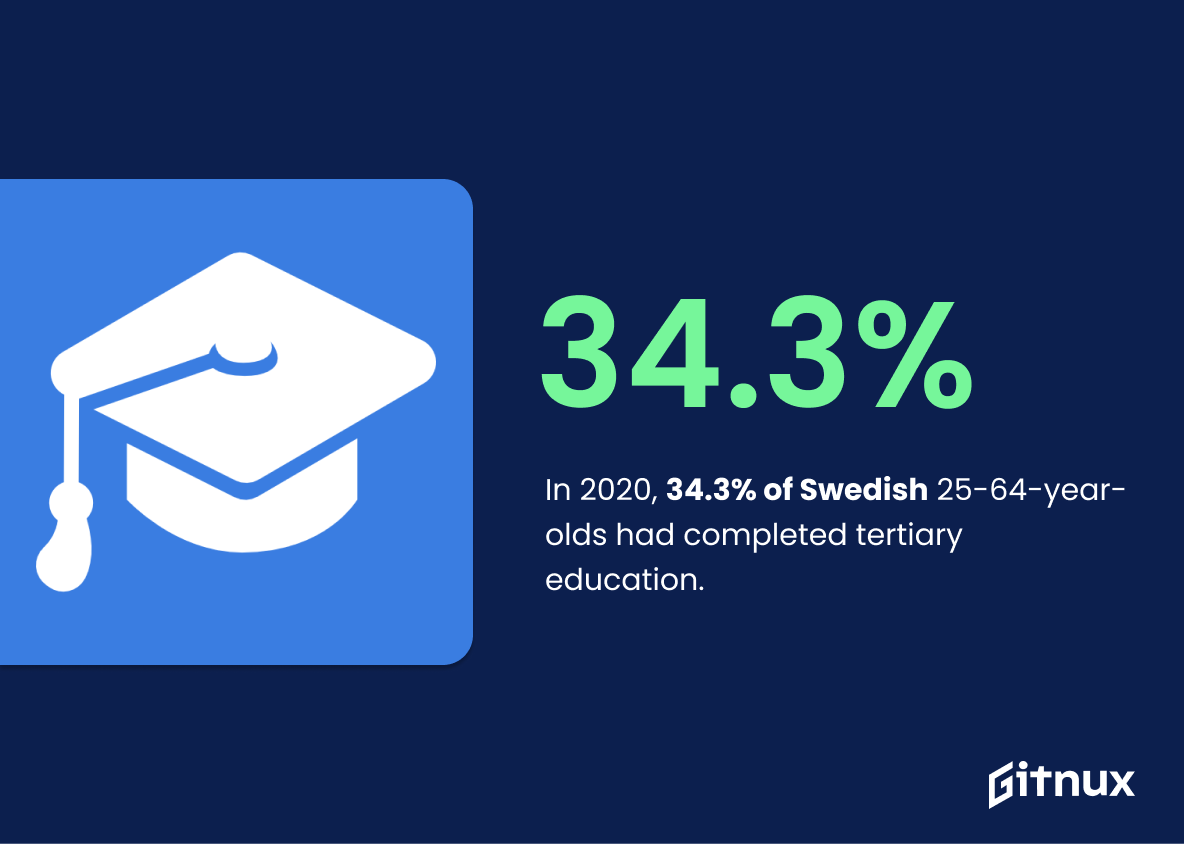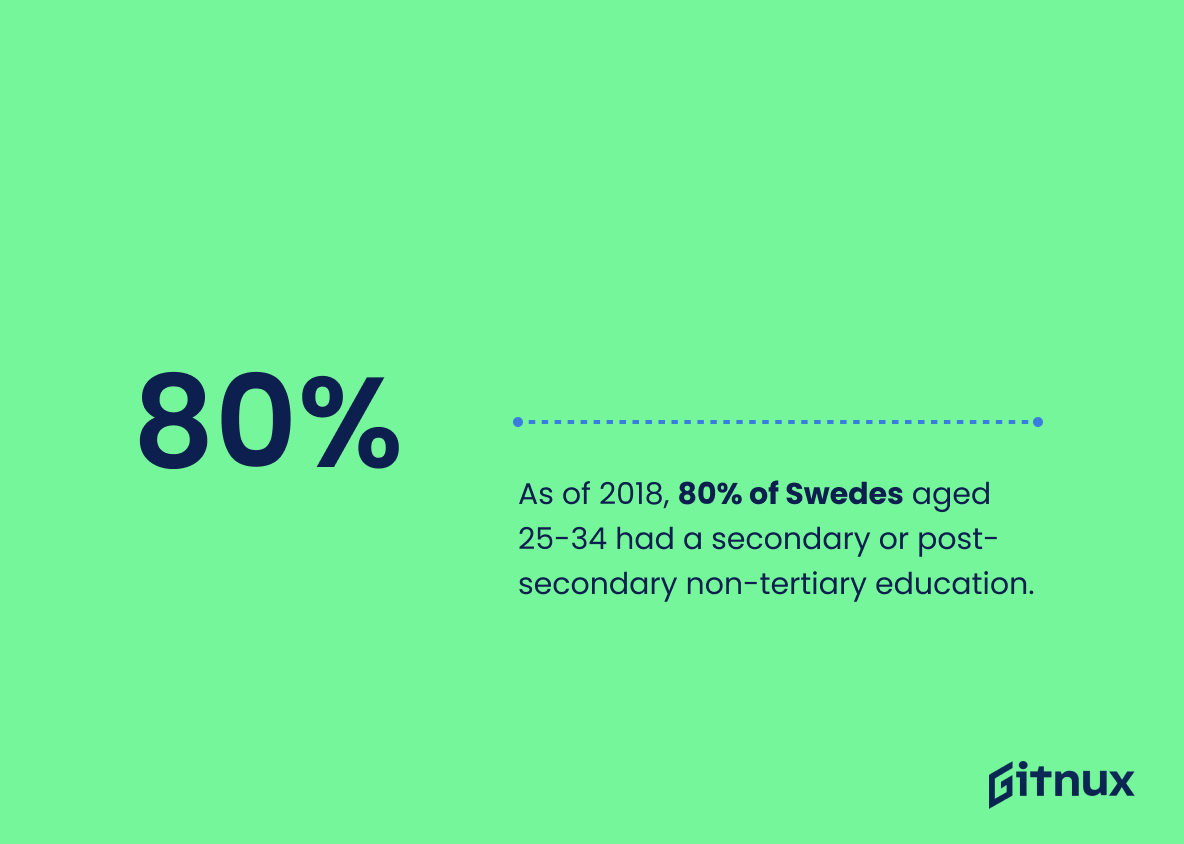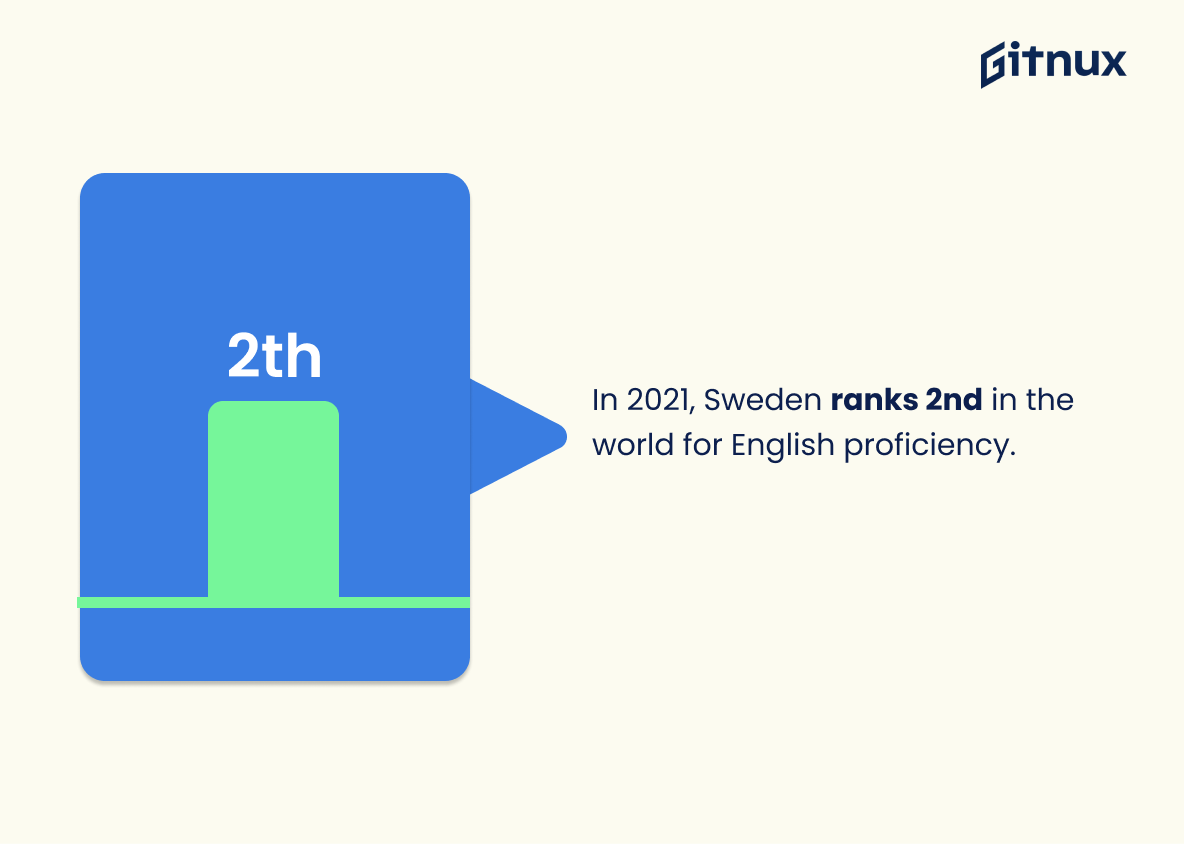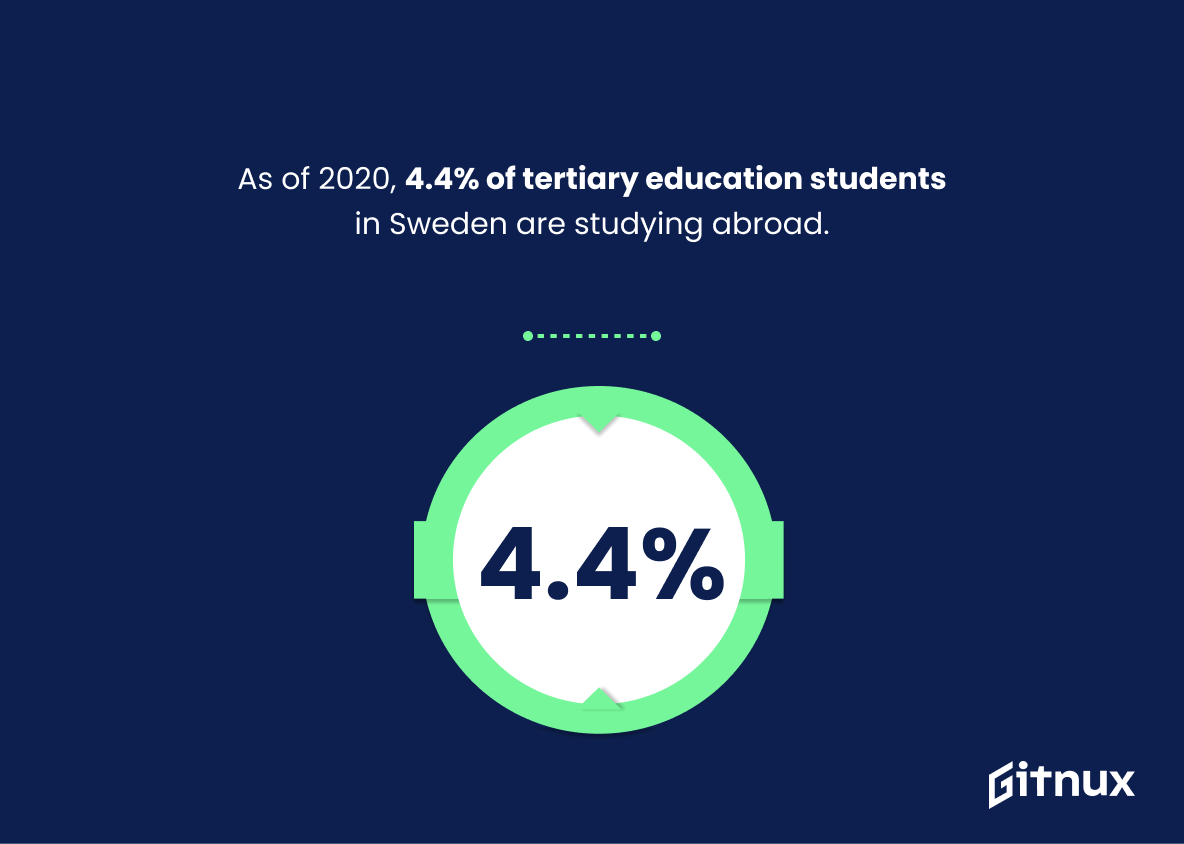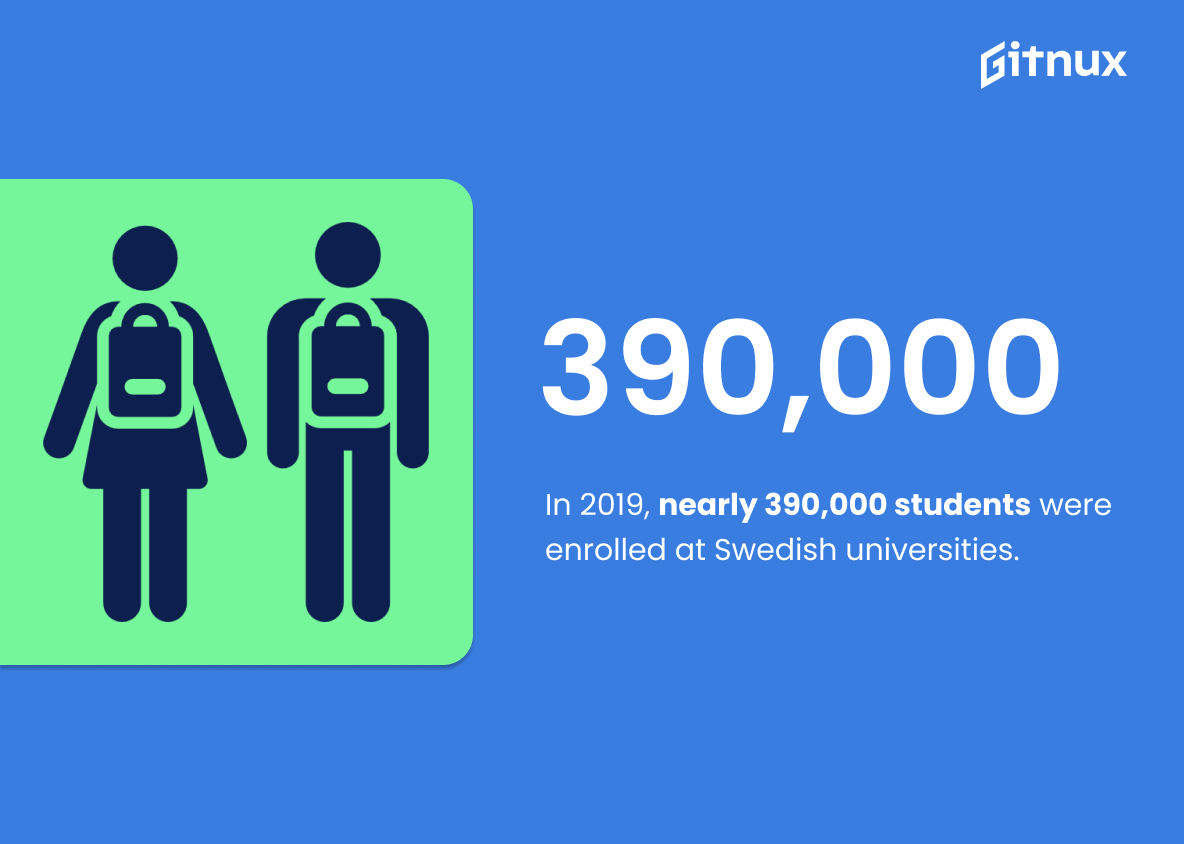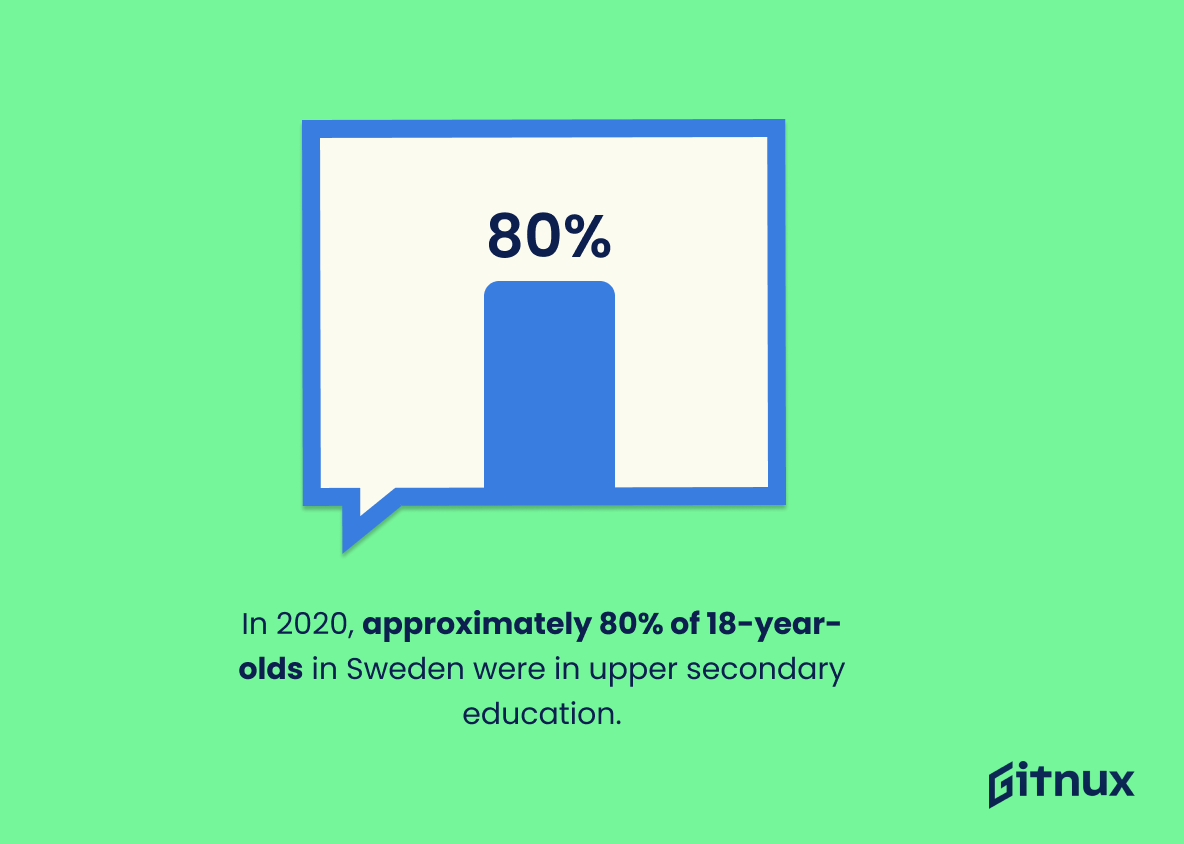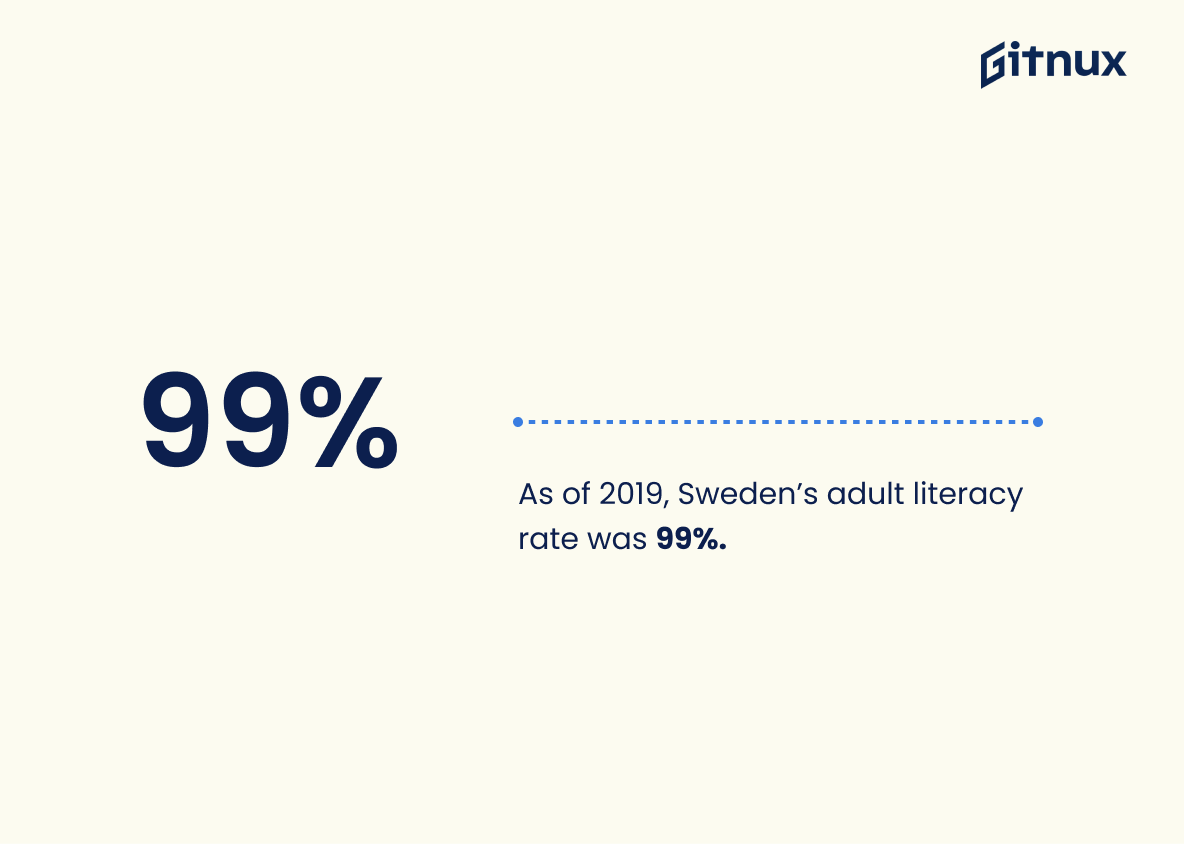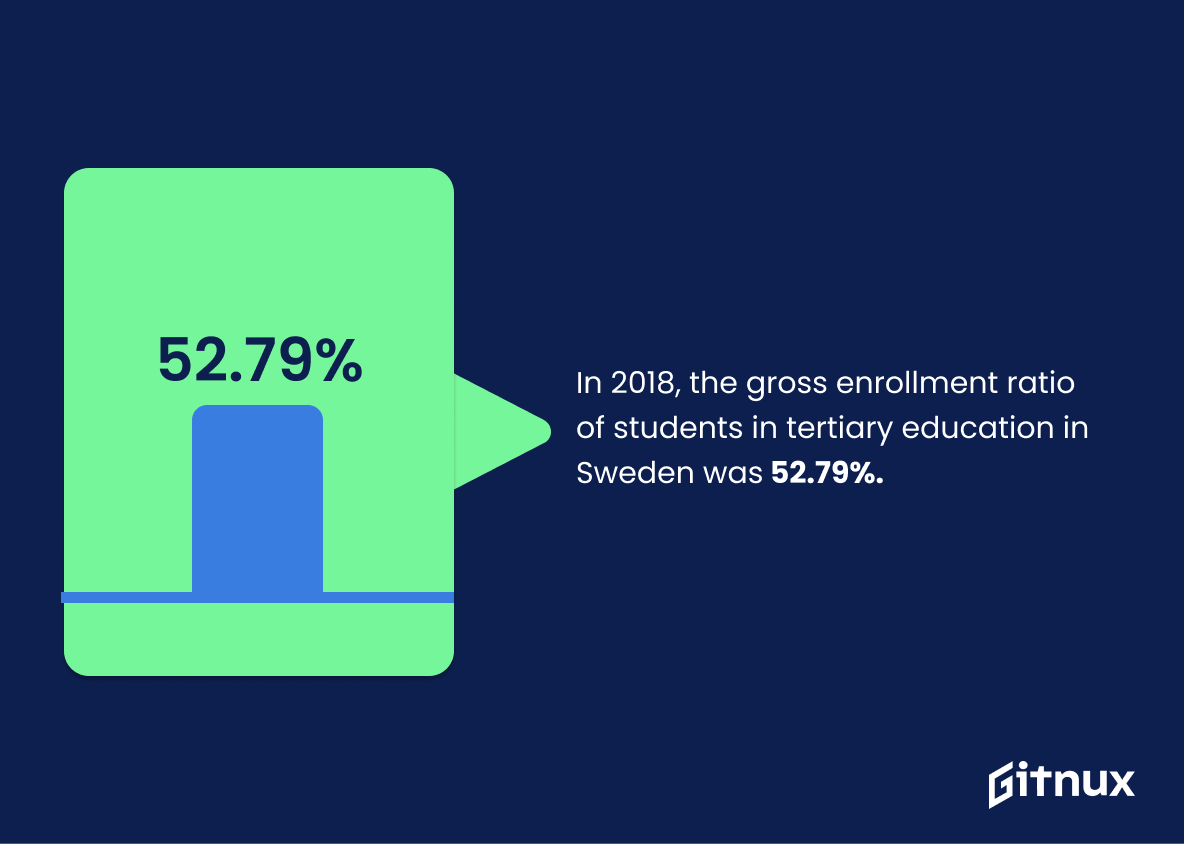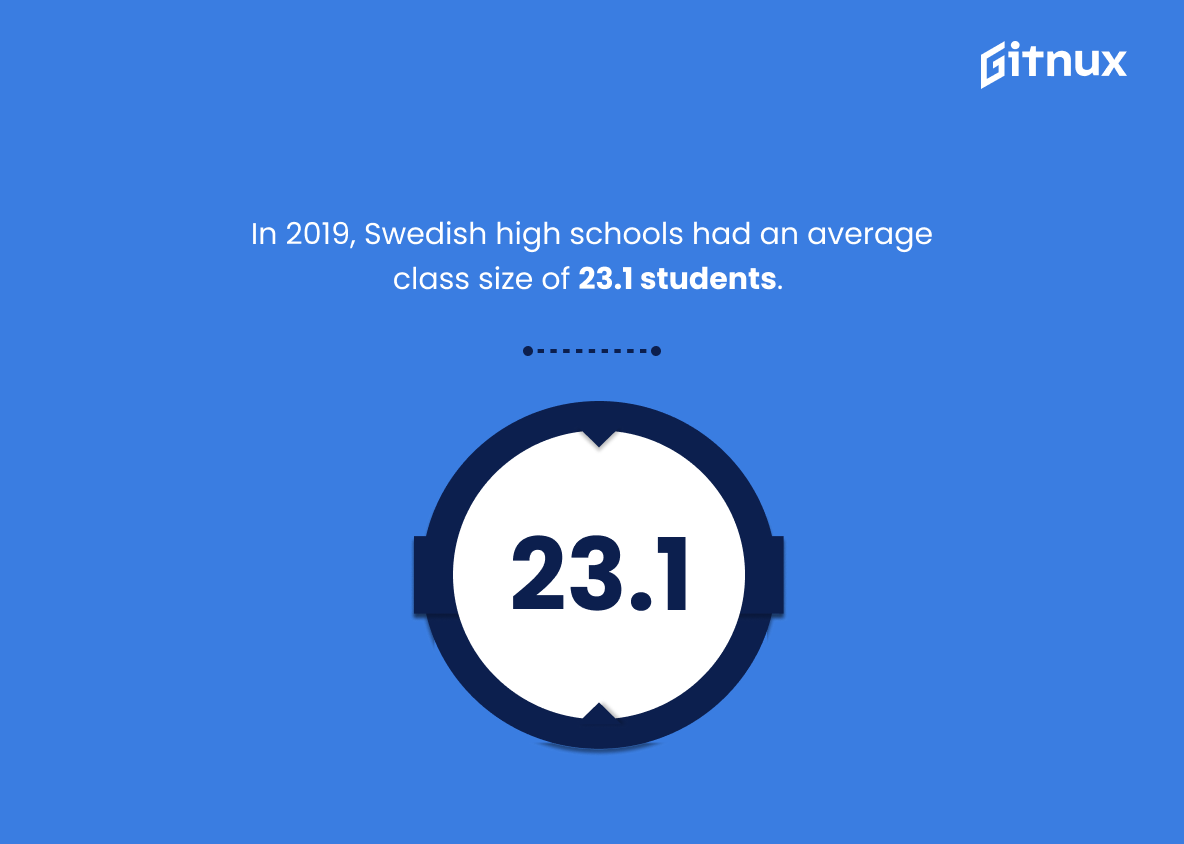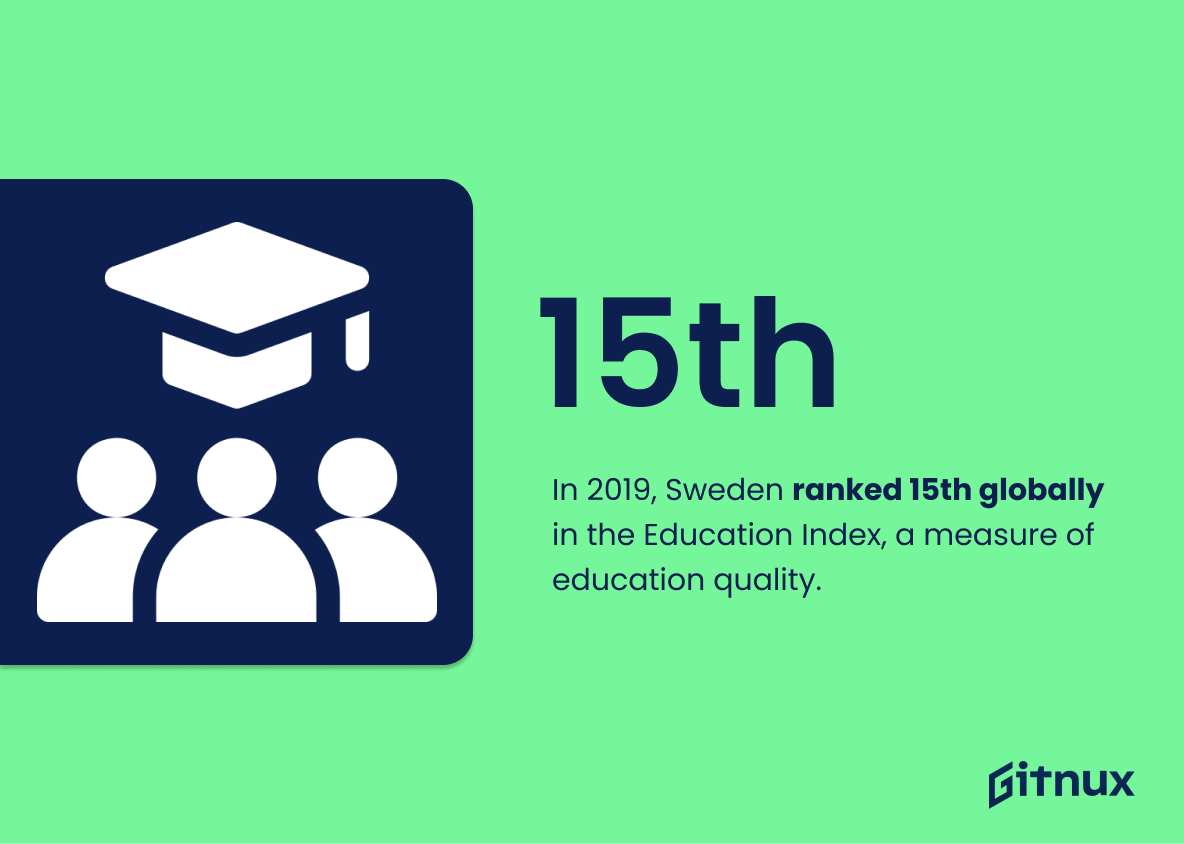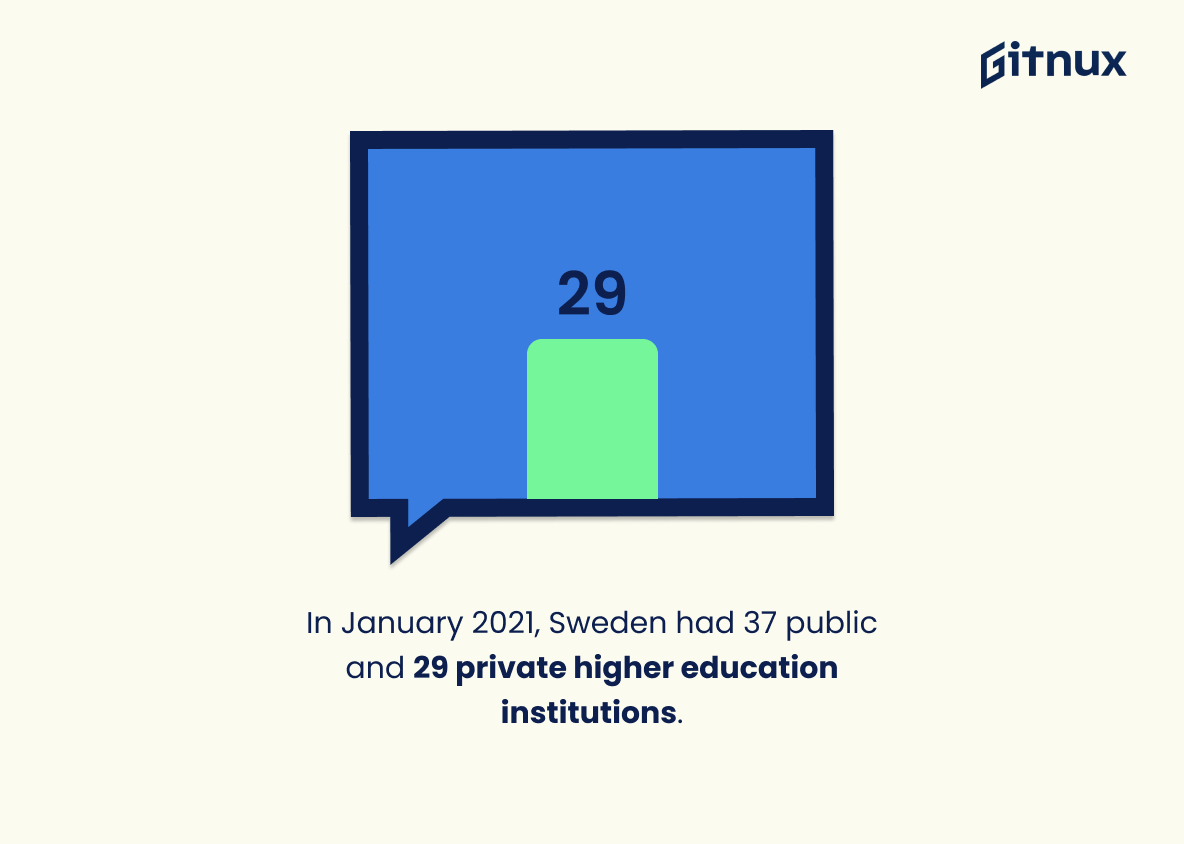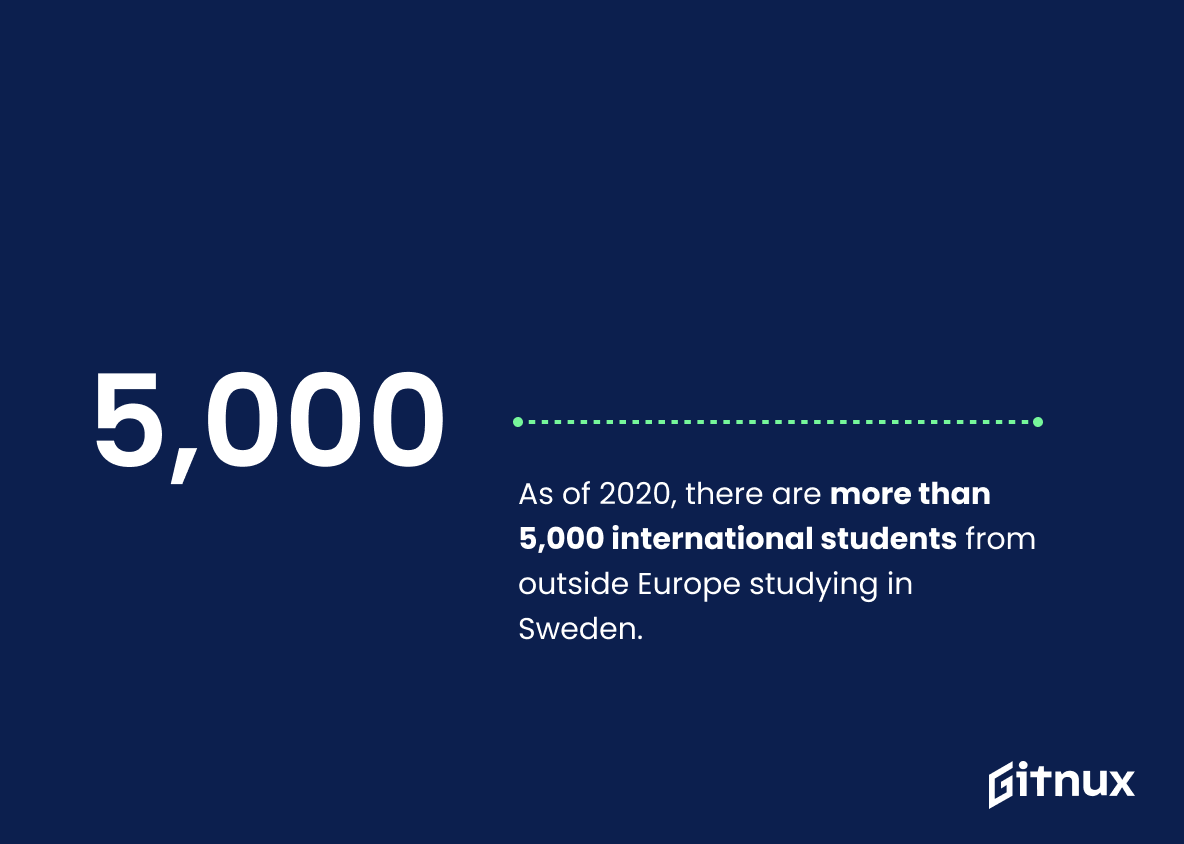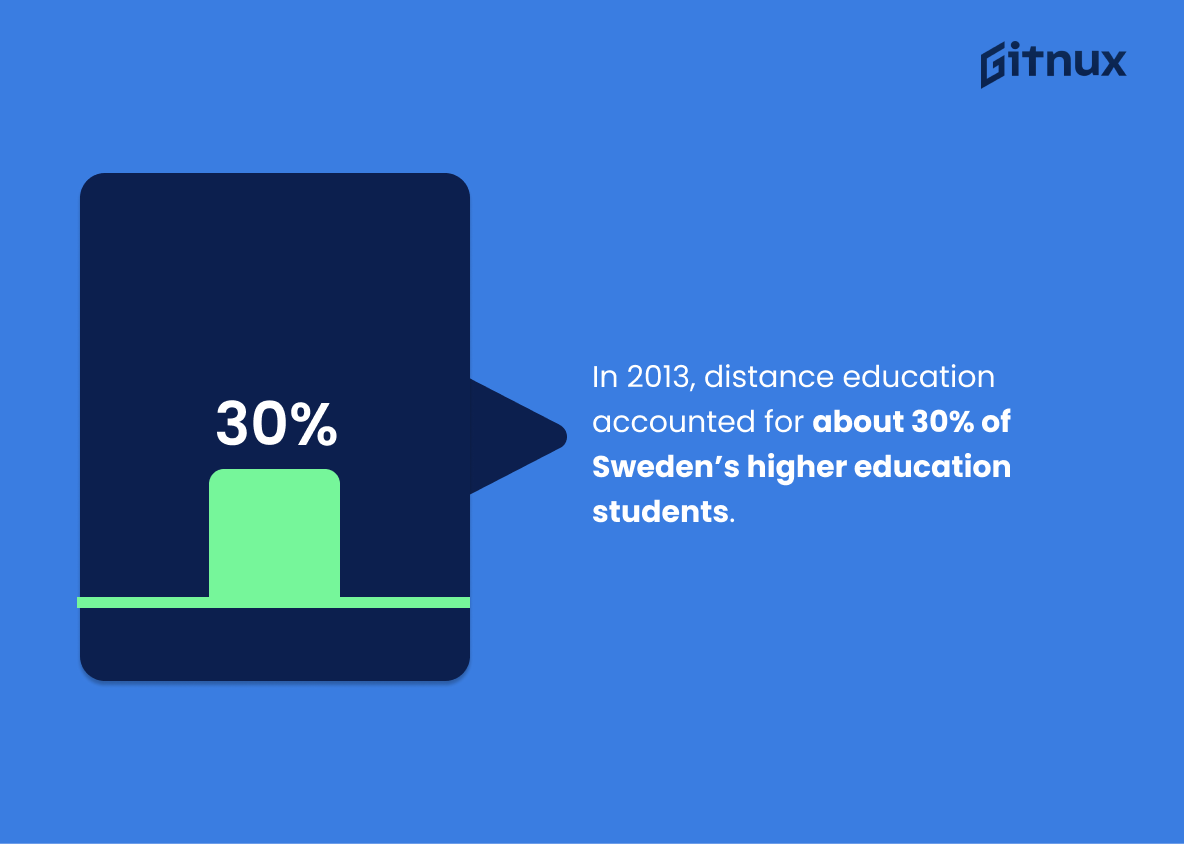Sweden is renowned for its high-quality education system, and the statistics below provide an overview of how it has evolved over time. In 2019, 100% of children aged 3-5 years were enrolled in preschool in Sweden. The country also spends 7.4% of its GDP on education, ranking 4th among all countries globally. Additionally, 34.3% of Swedish 25-64 year olds had completed tertiary education that same year while 80% had a secondary or postsecondary nontertiary qualification according to 2018 figures from the OECD.
In 2021, Sweden ranks 16th globally in terms of overall educational quality as well as 2nd worldwide for English proficiency according to World Population Review and EF Education First respectively; this speaks volumes about their commitment towards providing students with excellent learning opportunities both at home and abroad (4.4%). Moreover, there are currently 37 public higher education institutions plus 29 private providers offering courses across various disciplines – attracting more than 5 thousand international students annually since 2020.
Finally yet importantly: nearly 390 000 people were enrolled at universities throughout 2019; upper secondary schools have an average class size 23 1 pupils per teacher ratio was around 10 1 student/teacher whilst distance learning accounted 30%. All these facts point out why Sweden’s adult literacy rate stands 99%, making them 41st place when it comes vocational & technical skills Global Talent Competitiveness Index by INSEAD lastly SEK1 037 billion spent continuous professional development teachers alone during same period
This statistic is a testament to the commitment of the Swedish government to providing quality education to its youngest citizens. It demonstrates the country’s dedication to ensuring that all children have access to the educational resources they need to succeed. This statistic is a powerful reminder of the importance of investing in early childhood education and the positive impact it can have on a child’s future.
Sweden spends 7.4% of its GDP on education, ranking 4th among all countries in the world.
This statistic is a testament to the commitment of Sweden to education, placing them among the top countries in the world in terms of investment in education. It is a clear indication that Sweden is dedicated to providing its citizens with the best possible education, and that they are willing to invest the necessary resources to ensure that their citizens have access to quality education. This statistic is a powerful reminder of the importance of education in Sweden, and serves as a reminder of the importance of investing in education for the betterment of society.
Swedish Education Statistics Overview
In 2020, 34.3% of Swedish 25-64-year-olds had completed tertiary education.
This statistic is a testament to the success of Sweden’s educational system, showing that a large portion of the population has achieved a tertiary education. It is indicative of the country’s commitment to providing quality education to its citizens, and is a key factor in the nation’s overall economic success. This statistic is an important part of understanding the state of Swedish education and its impact on the country’s future.
For 2021, Sweden ranks 16th globally in education according to the World Population Review.
This statistic is a testament to the quality of Swedish education, placing it among the top countries in the world. It is a reflection of the hard work and dedication of the Swedish educational system, and a source of pride for the nation. It is also a reminder of the importance of investing in education, as it can have a lasting impact on the future of a country. This statistic is a valuable addition to any blog post about Swedish Education Statistics, as it provides a snapshot of the current state of Swedish education.
As of 2018, 80% of Swedes aged 25-34 had a secondary or post-secondary non-tertiary education.
This statistic is a testament to the success of Sweden’s educational system, as it demonstrates that the majority of young adults have achieved a secondary or post-secondary non-tertiary education. This is a remarkable achievement, as it shows that the country is providing its citizens with the necessary skills and knowledge to succeed in the modern world. This statistic is an important part of the conversation about Swedish education, as it highlights the country’s commitment to providing quality education to its citizens.
In 2021, Sweden ranks 2nd in the world for English proficiency.
This statistic is a testament to the success of Sweden’s educational system in teaching English. It speaks to the quality of instruction and the dedication of Swedish students to mastering the language. It also indicates that Sweden is a great place to learn English, making it an attractive destination for international students. Furthermore, it shows that Sweden is a leader in language education, setting a high standard for other countries to follow.
As of 2020, 4.4% of tertiary education students in Sweden are studying abroad.
This statistic is a telling indication of the increasing trend of Swedish tertiary education students seeking out international educational opportunities. It speaks to the growing desire of Swedish students to expand their horizons and gain a global perspective on their studies. It also reflects the increasing availability of international educational opportunities for Swedish students, as well as the increasing popularity of studying abroad among Swedish students.
In 2019, nearly 390,000 students were enrolled at Swedish universities.
This statistic is a testament to the success of Swedish universities in providing quality education to students. It highlights the fact that Swedish universities are highly sought after, with nearly 390,000 students enrolling in 2019 alone. This statistic is indicative of the fact that Swedish universities are providing a high-quality education that is attractive to students from all over the world.
In 2020, approximately 80% of 18-year-olds in Sweden were in upper secondary education.
This statistic is a testament to the success of Sweden’s educational system, as it shows that the vast majority of 18-year-olds are taking advantage of the opportunities available to them. It is a sign that the country is investing in its youth and providing them with the resources they need to succeed. This statistic is a powerful indicator of the quality of education in Sweden and the commitment to providing its citizens with the best possible education.
As of 2019, Sweden’s adult literacy rate was 99%.
The impressive statistic that Sweden’s adult literacy rate is 99% is a testament to the country’s commitment to education. It speaks to the quality of the educational system and the dedication of the Swedish people to learning. This high literacy rate is a reflection of the country’s investment in its citizens and its commitment to providing them with the tools they need to succeed.
In 2018, the gross enrollment ratio of students in tertiary education in Sweden was 52.79%.
The gross enrollment ratio of students in tertiary education in Sweden in 2018 paints a vivid picture of the country’s commitment to education. It shows that Sweden is dedicated to providing its citizens with the opportunity to pursue higher education, with more than half of the population enrolled in tertiary education. This statistic is a testament to the importance of education in Sweden and serves as a reminder of the country’s commitment to providing quality education to its citizens.
In 2019, Swedish high schools had an average class size of 23.1 students.
This statistic is a telling indication of the state of Swedish high schools. It reveals that, on average, Swedish high schools are able to provide a relatively small class size, allowing for more individualized attention and instruction for each student. This is an important factor in providing a quality education and is likely to have a positive impact on student outcomes.
In 2019, Sweden ranked 15th globally in the Education Index, a measure of education quality.
This statistic is a testament to the quality of Swedish education, highlighting its place among the world’s top educational systems. It is a powerful indicator of the success of Swedish education policies and the dedication of its educators. It is a valuable piece of information for anyone interested in the state of Swedish education and its potential for future growth.
As of January 2021, there are 37 public higher education institutions and 29 private providers of higher education in Sweden.
This statistic is a telling indication of the educational landscape in Sweden. It reveals that the country has a robust system of both public and private higher education institutions, providing students with a wide range of options when it comes to pursuing their studies. This is an important factor in ensuring that students have access to quality education and can make informed decisions about their future.
As of 2020, there are more than 5,000 international students from outside Europe studying in Sweden.
This statistic is a testament to the fact that Sweden is a highly sought-after destination for international students. It speaks to the quality of education and the welcoming environment that Sweden provides to students from all over the world. It also highlights the country’s commitment to providing a diverse and inclusive learning experience for all. This statistic is an important indicator of the success of Swedish education and its ability to attract students from around the globe.
In 2013, distance education accounted for about 30% of Sweden’s higher education students.
This statistic is a telling indication of the growing popularity of distance education in Sweden. It speaks to the fact that more and more students are turning to online learning as a viable option for higher education, and that the Swedish education system is adapting to meet the needs of its students. This is an important development that should not be overlooked when discussing the state of Swedish education.
Conclusion
Sweden is a country that places great emphasis on education. The statistics show that Sweden has achieved impressive results in terms of preschool enrollment, spending on education as a percentage of GDP, tertiary and secondary educational attainment rates, English proficiency levels among adults, international student mobility and the quality of its higher education system. Furthermore, Swedish schools have relatively small class sizes and high teacher-to-pupil ratios which contribute to an overall positive learning environment for students. These figures demonstrate how highly Swedes value their educational system and are committed to providing all citizens with access to quality schooling opportunities regardless of age or background.
References
0. – https://www.www.nafsa.org
1. – https://www.www.uka.se
2. – https://www.www.numbeo.com
3. – https://www.www.indexmundi.com
4. – https://www.www.studyinsweden.se
5. – https://www.worldpopulationreview.com
6. – https://www.www.studera.nu
7. – https://www.data.worldbank.org
8. – https://www.study.eu
9. – https://www.www.oecd.org
10. – https://www.sweden.se
11. – https://www.www.ef.com
